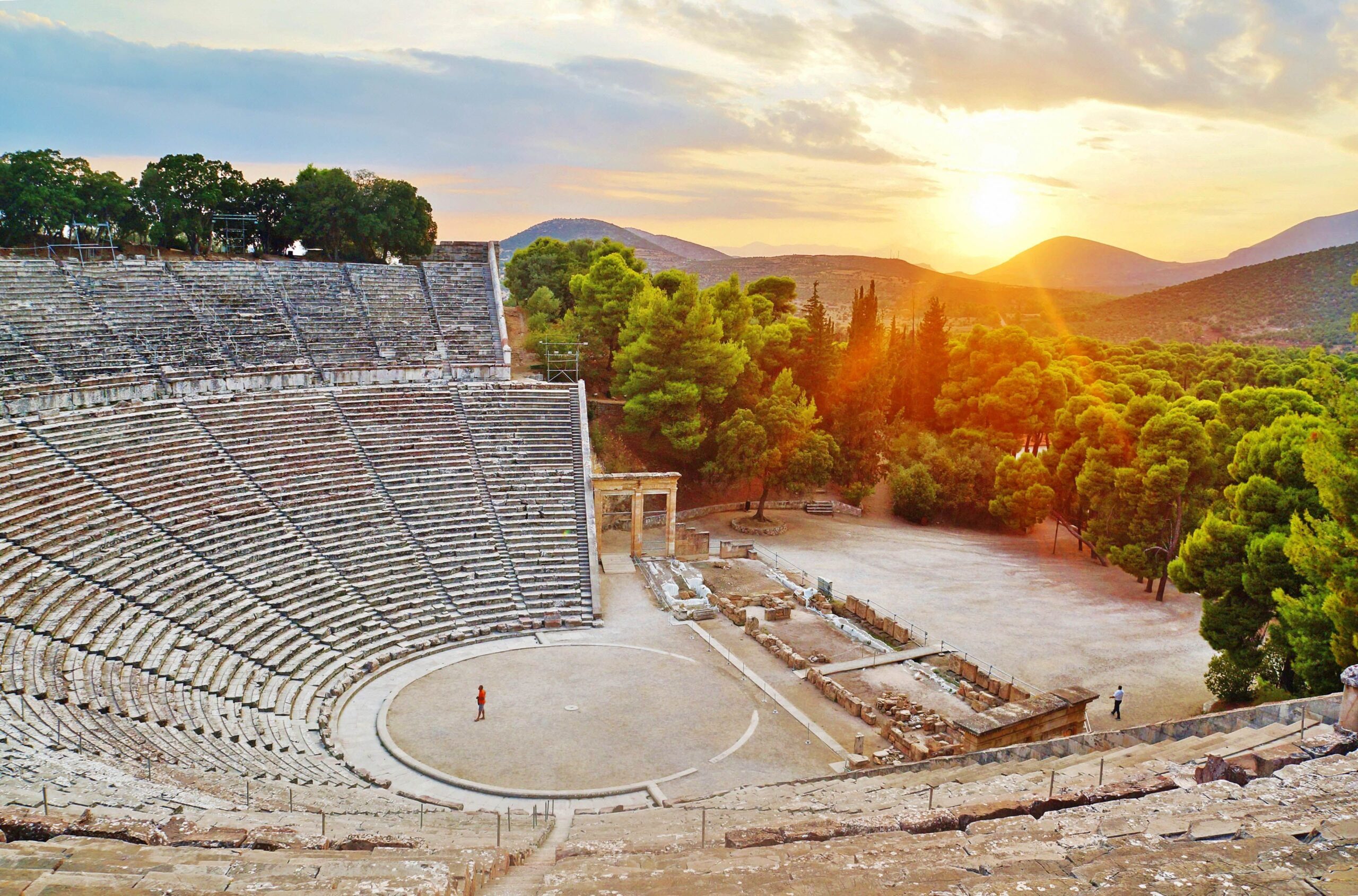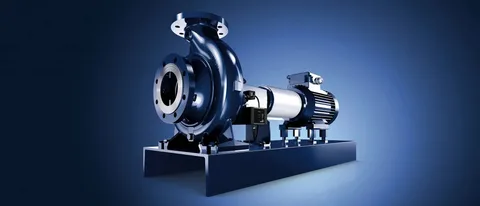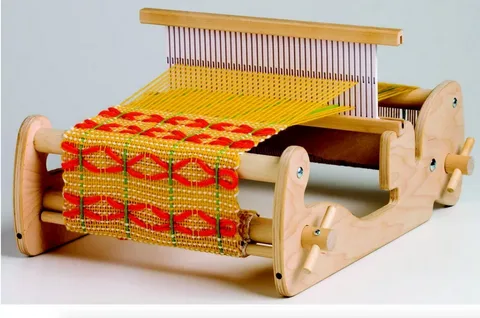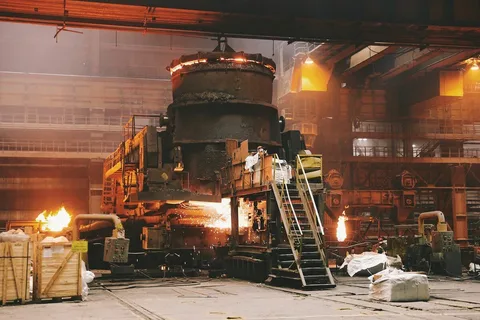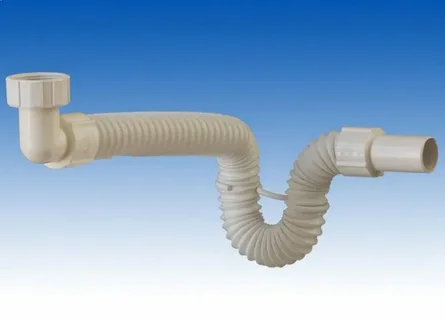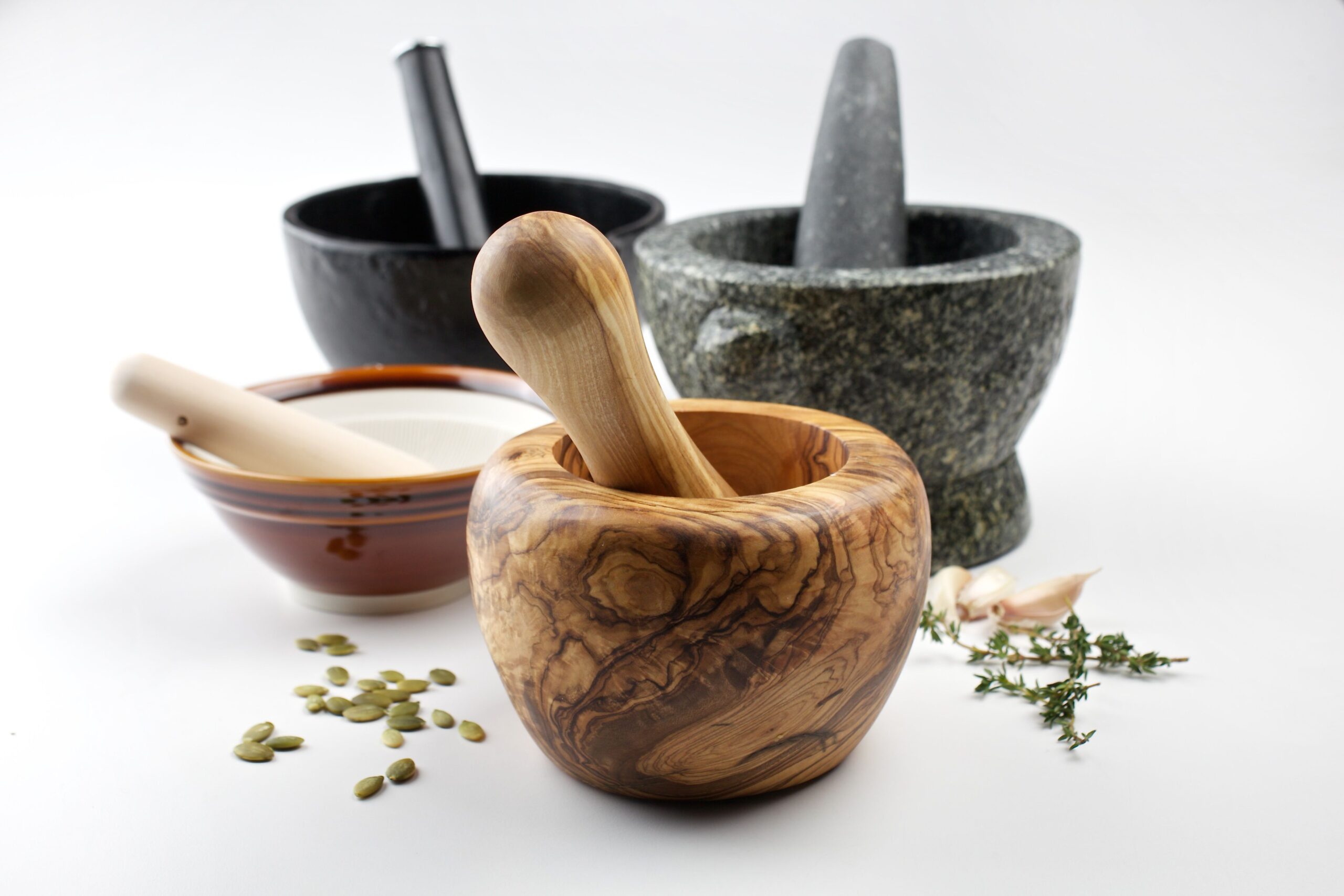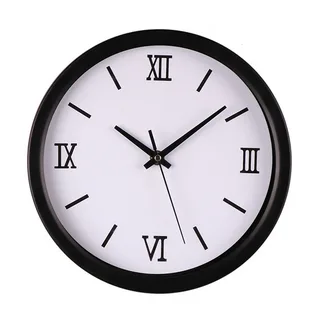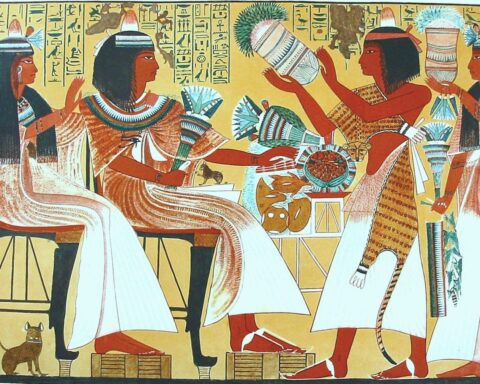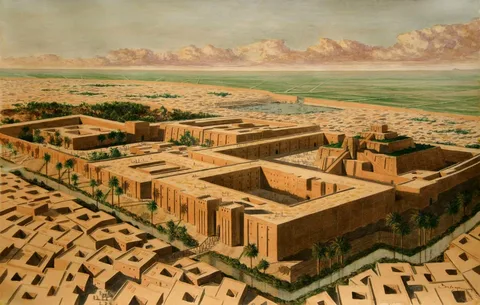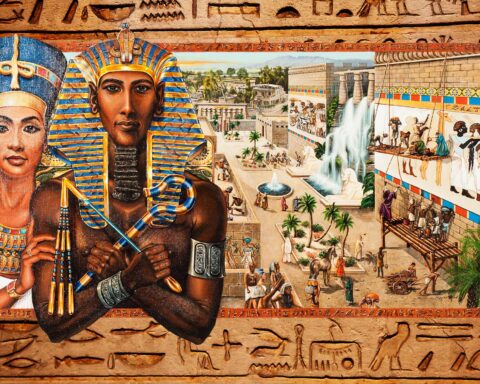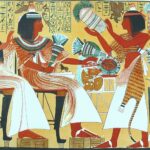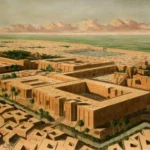Wheel
The earliest known wheel dates back to around 4000 BC in Mesopotamia.
The invention of the wheel is one of the most significant technological advancements in human history, revolutionizing transportation, industry, and communication.
It is believed that the earliest known wheel dates back to around 4000 BC in Mesopotamia, a region in modern-day Iraq.
This ancient civilization discovered the wheel by accident, likely when they noticed how easily logs rolled along a natural surface.
The first wheels were made from wooden discs or cylinders with a central axle, which allowed for easier movement and transportation of heavy loads.
As the use of the wheel spread throughout the ancient world, it was adapted into different forms, such as the potter’s wheel and the chariot wheel.
The invention of the wheel had far-reaching impacts on human society, enabling the development of more complex societies and civilizations.
Some of the key benefits of the wheel include:
- Increased mobility and transportation
- Improved food production and trade
- Enhanced communication and exchange
- Mitigation of manual labor and energy expenditure
- Possibility for urbanization and the growth of cities
The wheel has also had a significant impact on the modern world, with its use in transportation, industry, and technology.
Some examples of 10 ancient inventions still used today include:
- Wheels (transportation)
- Pulleys (mechanical advantage)
- Bridges (engineering and transportation)
- Lighthouses (navigation and safety)
- Dams (water management)
- Windmills (energy production)
- Sails (transportation)
- Ropes and Cords (mechanical advantage)
- Cogs and Gears (mechanical advantage)
- Lanterns (lighting)
These ancient inventions have had a profound impact on human history, shaping the course of civilization and enabling progress and development.
The study of these inventions and their evolution can provide valuable insights into the past, present, and future of humanity.
The wheel has since been used for various purposes, including transportation and industrial machinery.
The invention of the wheel is considered one of the most significant technological advancements in human history. It revolutionized the way people moved goods, materials, and themselves around. The wheel has since been used for various purposes, including transportation and industrial machinery.
In transportation, the wheel enabled the development of carts, wagons, carriages, and eventually automobiles. This greatly improved the speed and efficiency of moving people and goods over long distances. The wheel also enabled the creation of bicycles, which provided a more personal and sustainable mode of transportation.
For industrial machinery, the wheel was used to power mills and factories. It was used in conjunction with other machines, such as gears and pulleys, to amplify force and speed up production processes. This had a significant impact on the development of industry and commerce, enabling mass production and distribution of goods.
Other ancient inventions still widely used today include:
- Bow drill: a primitive tool used for creating holes in wood or other materials, which is still used by some craftsmen and artists.
- Sickle: an agricultural tool used to harvest crops, such as grains or grasses, which has seen little modification since ancient times.
- Shovel: a hand tool used for excavating soil, snow, or other materials, which is still widely used today.
- Pulleys: simple machines that change the direction of force or motion, which are still used in many applications, from cranes to construction equipment.
- Axle: a rod or shaft around which a wheel rotates, which is still an essential component of modern transportation systems, including cars and bicycles.
In conclusion, the wheel has had a profound impact on human history and continues to be an essential part of modern society. Its applications extend far beyond transportation and industrial machinery, and it remains a fundamental innovation that has shaped the course of human civilization.
Brewing Technology
Ancient civilizations like the Sumerians developed sophisticated brewing techniques around 4000 BC.
- The ancient civilization of Mesopotamia, specifically the Sumerians, are credited with developing some of the earliest recorded forms of beer brewing around 4000 BC.
- This discovery was made in the form of clay tablets found at Nippur, which included a recipe for beer that included fermented barley and dates.
- The ancient Egyptians also developed sophisticated brewing techniques, with evidence of beer production dating back to around 3000 BC.
- Beer played an important role in ancient Egyptian society, being used as a form of payment for workers, a way to treat ailments, and even as a form of spiritual offering.
- The Sumerians also developed the concept of the “house of beer” or “broad house,” where beer was brewed on a large scale for commercial purposes.
- This system allowed for mass production and distribution of beer throughout ancient Mesopotamia, making it one of the earliest examples of a brewery in history.
- The use of yeast in fermentation was also well understood by the Sumerians, who likely used wild yeast from the air or plants to ferment their beers.
- This knowledge laid the foundation for modern brewing techniques and is still utilized today in many breweries around the world.
10 Ancient Inventions Still Used Today
- Wheel: The invention of the wheel dates back to ancient Mesopotamia, specifically with the Sumerians, who used it for transportation and trade.
- Brewing Techniques: As mentioned earlier, the Sumerians developed sophisticated brewing techniques around 4000 BC, which are still used today in modern breweries.
Writing System: The Sumerians also created one of the earliest writing systems, known as cuneiform, which is still studied by scholars today. - Irrigation Systems: Ancient civilizations such as the Egyptians and Mesopotamians developed complex irrigation systems to support agriculture.
- Architectural Techniques: The use of arches, columns, and vaults in architecture dates back to ancient civilizations, with examples found in structures like the Egyptian pyramids and Roman aqueducts.
- Waterwheel: The ancient Greeks and Romans used waterwheels for power and irrigation, which are still used today in many parts of the world.
- Sails: Ancient Egyptians and Phoenicians used sails on ships to navigate the seas, which is still a crucial part of modern maritime trade.
- Calendars: The invention of calendars dates back to ancient civilizations, with examples found in ancient Egypt, Greece, and Rome.
- Glassmaking Techniques: The ancient Phoenicians developed techniques for making glass, which was used for decorative and practical purposes.
- Roads: Ancient civilizations such as the Romans built extensive networks of roads that are still studied by engineers today and have influenced modern road construction.
The same principle is still used today to create a wide range of beverages, including beer and wine.
Sailing Ships
The ancient Egyptians built sailing ships with keels around 3000 BC.
- The ancient Egyptians were renowned for their ingenuity and innovative spirit, which enabled them to build impressive sailing ships with advanced features such as keels around 3000 BC.
- The introduction of keeled hulls revolutionized maritime transportation by allowing the ships to cut through the water more efficiently and maintain stability, making long-distance voyages possible.
- This technological advancement was a significant contribution to the development of international trade and cultural exchange between Egypt and other ancient civilizations, including Mesopotamia, Phoenicia, and Greece.
- The ancient Egyptians’ ability to design and build keeled sailing ships also facilitated their conquests and colonization of neighboring regions.
- Keels were not only crucial for the stability and maneuverability of these vessels but also helped to improve the overall seaworthiness of the ships by reducing drag and increasing buoyancy.
- The construction of sailing ships with keels around 3000 BC demonstrates the Egyptians’ mastery over various maritime technologies, including shipbuilding, navigation, and sail design.
- This ancient achievement has had a lasting impact on modern marine engineering, inspiring innovations in shipbuilding materials, hull designs, and propulsion systems.
- The Egyptians’ use of keeled ships also underscores their understanding of the importance of coastal defenses and maritime security in protecting trade routes and safeguarding national interests.
- As a testament to their ingenuity, the ancient Egyptian sailing ships with keels have left an enduring legacy that continues to influence shipbuilding practices today.
- The study of these ancient vessels offers valuable insights into the evolution of maritime technologies and highlights the Egyptians’ significant contributions to the development of modern shipping and seafaring traditions.
The design has since evolved but still forms the basis for modern naval architecture.
The phrase “The design has since evolved but still forms the basis for modern naval architecture” is likely referring to the development of shipbuilding and naval engineering over time. However, it can also be applied more broadly to describe how ancient inventions continue to influence our daily lives in significant ways.
Despite the passage of thousands of years, many ancient civilizations left behind a legacy that we still utilize today. Here are 10 examples of ancient inventions that have stood the test of time and remain integral parts of modern life:
- The Wheel (circa 4000 BCE) – Invented by the Sumerians in Mesopotamia, the wheel revolutionized transportation and facilitated the development of wheeled vehicles. Today, we still rely on wheels for cars, bicycles, and other modes of transportation.
- The Waterwheel (circa 3000 BCE) – The ancient Greeks used waterwheels to power sawmills, grind grain, and perform other tasks. Modern hydroelectric power plants use similar technology to generate electricity.
- The Arch (circa 2500 BCE) – Invented by the Mesopotamians, the arch allowed for the construction of stronger and more stable buildings, bridges, and aqueducts. The Roman Empire perfected the arch and used it extensively in their infrastructure projects.
- The Screw Pump (circa 2000 BCE) – Used to irrigate crops and supply water to cities, the screw pump has seen continuous use for over four millennia. Modern examples of this technology include centrifugal pumps and submersible pumps.
- Metallurgy (circa 3000 BCE) – The discovery of metals like copper, bronze, and iron enabled ancient civilizations to create stronger and more durable tools and weapons. Today, we continue to develop new materials using advanced metallurgy techniques.
- The Barge (circa 2000 BCE) – Used for transportation and trade, barges were an essential part of ancient riverine economies. Modern barges still ply the world’s waterways, carrying cargo and supplies.
- The Anemometer (circa 100 CE) – Invented by the Greek philosopher Hipparchus, the anemometer measured wind speed and direction, helping sailors to better navigate the seas. Today, we use similar technology in modern weather forecasting.
- The Compass (circa 200 BCE) – The ancient Chinese developed a magnetized compass that helped them navigate their vast country. Modern magnetic compasses have evolved into electronic navigation systems used by ships and aircraft worldwide.
- Gunpowder (circa 1000 CE) – First discovered in China during the Song Dynasty, gunpowder was initially used for fireworks and other entertainment purposes. Later, it became an essential component of firearms, which have shaped modern warfare.
- The Printing Press (1450 CE) – Johannes Gutenberg’s innovative press allowed for mass production of books, contributing to a significant increase in literacy rates and knowledge dissemination. Today, we use digital printing technology for high-quality book production and more.
Pumps and Valves
Early pumps were used in ancient civilizations like Rome to irrigate fields around 2000 BC.
The use of pumps dates back thousands of years, with evidence of their existence found in ancient civilizations such as the Romans. It is believed that these early pumps were used to irrigate fields around 2000 BC, showcasing the ingenuity and resourcefulness of ancient cultures.
These primitive pumps were likely made from stone or wood and relied on manual labor or animal power to function. They would have been simple in design, consisting of a handle or wheel that activated a piston or plunger, which then pumped water out of a well or reservoir.
The ancient Romans, known for their engineering prowess, likely developed more sophisticated pumps than earlier civilizations. Their advanced knowledge of materials and construction techniques allowed them to create more efficient and durable pumps, further increasing agricultural productivity.
While these early pumps were crucial in supporting agriculture and urban development, they also had significant social implications. By providing a reliable source of water, they enabled the growth of larger populations and facilitated the establishment of trade networks.
The impact of ancient pumps on modern society cannot be overstated. Many ancient inventions have been lost to time, but the principle behind early pumps remains an essential component of contemporary engineering practices.
In fact, some of the most influential ancient inventions still used today include
- Wheels (circa 4000 BC)
- Bridges (circa 1000 BC)
- Sewing Needles (circa 2000 BC)
- Watermills (circa 200 AD)
- Pulleys and Winches (circa 200 AD)
- Surveying Instruments (circa 100 AD)
The use of pumps in ancient civilizations has also laid the groundwork for significant technological advancements. The principles behind early pumps have been adapted and refined over time, leading to the development of more efficient and powerful systems that continue to shape modern society.
The same design has since been modified to pump water for industrial use.
The concept of a primitive windmill has its origins dating back to ancient civilizations, with evidence suggesting that the first windmills were used by the Persians around 500-900 AD. These early windmills utilized vertical-axis designs and were primarily employed for tasks such as grinding grain.
However, it was not until the Middle Ages that windmills gained widespread use throughout Europe, particularly in the Netherlands where they played a crucial role in the country’s agricultural development. The design of these early European windmills featured horizontal-axis blades mounted on a rotating shaft, allowing them to harness and convert wind energy into mechanical power.
The same design has since been modified to pump water for industrial use, which highlights the versatility and adaptability of ancient inventions. This concept of repurposing and modifying existing designs is a testament to human ingenuity and our ability to innovate within established frameworks.
Watermills
The first recorded instance of a watermill was in ancient Greece, dating back to around 200 BC.
The concept of using water power to perform mechanical work dates back to the ancient civilizations, with one of the earliest recorded instances being from ancient Greece around 200 BC.
The Greeks used their knowledge of mathematics and engineering to build sophisticated machines that harnessed the power of water, creating a watermill that could grind grain into flour.
This invention was significant not only because it provided a more efficient way of processing grains but also because it marked the beginning of a new era in which humans began to rely on machines and technology to perform tasks that were previously done manually.
The watermill, which used the power of flowing water to turn a wheel or gears, was an important innovation that enabled people to grind grain into flour more quickly and efficiently than ever before.
This led to a significant increase in food production and availability, allowing civilizations to grow and become more complex. The use of watermills also paved the way for other mechanical inventions that would revolutionize various aspects of life.
The first watermill is just one example of many ancient inventions that still have a significant impact on modern society. Some of these include
- Lighthouses: These towering structures were built by the ancient Greeks to guide ships safely into harbor, and their design has remained largely unchanged for centuries.
- Water clocks: The ancient Egyptians used water clocks to measure time, with a similar device still being used today.
- Shovels: The humble shovel has been a staple of human civilization for thousands of years, with its design and materials evolving over time but remaining a vital tool for excavating and digging.
- Ropes: Rope was first made from plant fibers by ancient civilizations, and it remains an essential material today in countless applications, including construction, shipping, and even search and rescue operations.
- Wheelbarrows: The ancient Chinese invented the wheelbarrow, which has undergone many modifications over time but still performs a crucial function in moving heavy loads.
- Oars: Rowing vessels have been around for thousands of years, with the design and materials evolving over time to create more efficient and effective boats.
- Sails: Sails were first used by ancient sailors as a means of harnessing the wind to propel their vessels. Modern sailboats continue to rely on this fundamental principle of sailing.
- Winches: Ancient civilizations used winches to lift and move heavy loads, with modern versions still being employed in various industries such as construction and manufacturing.
- The impact of these ancient inventions can be seen throughout history, shaping the course of human civilization and influencing many aspects of our lives today. From watermills to wheelbarrows, lighthouses to winches, they continue to remind us of the ingenuity and creativity that defines humanity.
Watermills have since been used globally for various tasks, including grinding grain and sawing wood.
The invention of the watermill has had a profound impact on human civilization, allowing people to harness the power of moving water to perform various tasks.
One of the most significant uses of the watermill is in grain grinding. Watermills have been used for centuries to grind grain into flour, which is then used to make bread and other baked goods. This has been a crucial task in many cultures, providing sustenance for large populations.
In addition to grain grinding, watermills have also been used for sawing wood. The power provided by the moving water allows for efficient and precise cutting of wooden planks, making it easier to construct buildings and other structures. This has been especially important in areas where trees are scarce or difficult to access.
Watermills have also been used for various industrial tasks, including milling, pumping water, and even powering machinery. The versatility of the watermill has made it an essential tool for many different industries and cultures around the world.
Global Impact
- Europe: Watermills were first introduced to Europe by the Romans, where they played a crucial role in industrial development.
- Asia: In Asia, watermills have been used for centuries in countries such as China, India, and Japan.
- Africa: In Africa, watermills have been used in various forms, including traditional grinding stones and modernized versions.
- Americas: The first watermill in the Americas was built by Spanish conquistadors in present-day Mexico.
Adaptations
Turkish Mills: These are a type of watermill that uses an Archimedean screw to lift water from a lower to higher level.
Vertical Axis Watermills: These watermills use vertical axes and have been used in various parts of the world, including Europe and Asia.
Looms
The earliest evidence of a loom dates back to ancient China around 2000 BC.
The earliest evidence of a loom dates back to ancient China around 2000 BC, where archaeologists have discovered intricate weaving patterns on ceramic tiles and other artifacts.
This discovery suggests that the loom was an essential tool for textile production during this time period, allowing skilled artisans to create beautiful fabrics with complex designs and patterns.
The invention of the loom revolutionized textiles, enabling mass production of cloth and making it a crucial part of many ancient civilizations.
Today, various types of looms are still used in many parts of the world for producing traditional and modern textiles, ranging from handlooms to mechanized power looms.
The development of the loom was one of the earliest examples of technological innovation in human history, and its impact on textile production and culture has been profound.
Despite the rise of machine-made fabrics, many artisans and crafters continue to use traditional looms to produce unique, handcrafted textiles that are highly prized for their quality and aesthetic appeal.
In fact, some manufacturers have started using traditional techniques in combination with modern technology to create innovative fabrics that blend the best qualities of both worlds.
The versatility and durability of the loom as a tool make it an excellent example of how ancient inventions can still be relevant today.
From traditional handlooms to mechanized power looms, this invention has continued to evolve over time while remaining a vital part of many industries and cultures around the world.
The use of looms in textile production is an enduring testament to the ingenuity and creativity of ancient civilizations and their contributions to human progress.
The principle remains the same today, with various modifications for modern textiles production.
The spinning jenny, invented by James Hargreaves in 1764, revolutionized textile production by allowing a single worker to manage multiple spindles simultaneously. This innovation enabled the mass production of yarn and cloth, significantly reducing the labor required for textile manufacturing.
In ancient civilizations, textiles were often woven on simple handlooms or looms operated by foot pedals. These primitive tools relied on human power to create intricate patterns and designs. Modern textile machinery has evolved from these early beginnings, incorporating electricity, automation, and computer control to increase efficiency and precision.
The flying shuttle, patented by John Kay in 1733, is another ancient invention that still influences modern textiles production. By automating the process of weaving, the flying shuttle allowed for faster production rates and more intricate patterns. Modern textile machinery has further improved upon this concept with automated weaving machines capable of producing complex designs at high speeds.
The mechanized loom, developed during the Industrial Revolution, enabled mass production of textiles by allowing multiple weavers to operate simultaneously. This led to significant reductions in labor costs and increases in productivity. Modern textile manufacturing still relies on mechanized looms, often with advanced features such as automated thread cutting and tensioning.
Today’s textile industry continues to benefit from ancient innovations like the spinning jenny and flying shuttle. By building upon these foundational technologies, modern manufacturers have created increasingly sophisticated machines that combine multiple processes into a single unit. This streamlined production process has made textiles more accessible and affordable for global consumers.
The impact of these ancient inventions on modern textile manufacturing cannot be overstated. Their enduring influence serves as a testament to the ingenuity of our ancestors and their ability to create solutions that continue to shape industries today.
Metallurgy and Furnaces
Civilizations like Egypt developed early metallurgy techniques using furnaces around 3000 BC.
The ancient civilizations of the world, particularly Egypt, made significant contributions to the development of metallurgy and the creation of various tools and technologies that have stood the test of time.
Civilizations like Egypt developed early metallurgy techniques using furnaces around 3000 BC. These furnaces enabled them to extract metals from ores, which were then used to create a wide range of tools, utensils, and other essential items.
One of the most significant inventions of ancient civilizations was the wheel. The invention of the wheel is believed to have occurred in Mesopotamia around 4000 BC. The wheel enabled people to transport goods and materials more efficiently, which had a profound impact on trade, commerce, and societal development.
Another important invention that originated in ancient times is writing. The first known form of written communication was cuneiform, which emerged in Mesopotamia around 3500 BC. Writing enabled the recording of history, laws, and literature, which had a profound impact on human civilization.
The ancient Egyptians also made significant contributions to the development of medicine. They developed a system of diagnosis and treatment that included surgery, pharmacy, and herbal remedies. The Edwin Smith Papyrus, an ancient medical text from around 1600 BC, provides valuable insights into the medical knowledge of ancient Egypt.
In addition to these examples, many other ancient inventions continue to be used today, including
- The plow, which was first developed in Mesopotamia around 4000 BC and is still used to till soil in many parts of the world;
- Waterwheels, which were used in ancient Egypt to power mills and other machinery;
- Metallurgical techniques, such as forging and smelting, which are still used today to extract metals from ores;
- Clockmaking, which emerged in ancient Babylon around 3500 BC and has continued to evolve over time;
- The printing press, which was invented by Johannes Gutenberg in the 15th century but relied on earlier innovations such as movable type and block printing; and
- Archimedes’ screw, a mechanical device used for pumping water that is still used today in many parts of the world.
In conclusion, ancient civilizations made significant contributions to the development of various technologies and tools that have had a lasting impact on human society. The study of these early innovations provides valuable insights into the history of technology and can help us understand how to develop new solutions to modern problems.
The same technology is still used today for various industrial purposes, including iron and steel production.
The Industrial Revolution marked a significant turning point in human history, as new technologies and manufacturing techniques enabled mass production and transformed the way goods were produced. One of the key technologies that emerged during this period was the blast furnace, which is still used today for various industrial purposes, including iron and steel production.
The blast furnace, also known as a cupola or reverberatory furnace, is a large, brick-lined vessel in which iron ore is smelted at high temperatures to produce molten metal. This process involves the reaction of hot air with coke (a form of carbon) and iron ore, resulting in the production of molten steel. The blast furnace relies on the principle of reduction, where oxygen is removed from the iron oxide, leaving behind pure metal.
The process begins with the charging of cokm (carbon-rich material) and iron ore into the top of the furnace. The mixture is then heated by blowing hot air through nozzles at the bottom, causing the coke to burn rapidly and produce a large amount of heat. This heat energy reduces the iron oxide in the orem, resulting in the production of pure metalm.
The blast furnace is still widely used today for various industrial purposes, including the production of iron, steel, and other metals. Modern variations of the blast furnace have improved efficiency and reduced environmental impact, but the fundamental principles remain the same as they were during ancient times.
In addition to its use in metal production, the blast furnace has also been adapted for various other applications, including cement manufacture and waste treatment. Its versatility and long lifespan make it one of the most enduring technologies from the ancient world, with ongoing relevance in modern industry.
Syphon System
The ancient Romans developed a syphon system to transport water around 100 BC.
The ancient Romans were renowned for their innovative engineering skills, and one of their most impressive creations was the syphon system. This ingenious contraption allowed them to transport water with relative ease, revolutionizing urban planning and architecture in the process.
Developed around 100 BC, the syphon system utilized a combination of gravity, atmospheric pressure, and clever pipe design to move water from one location to another.
The system consisted of a siphon, which was essentially a U-shaped pipe that used the pressure difference between two points to push water upwards and out of a container or source. This allowed for the efficient transfer of water over long distances with minimal loss of pressure.
This technology enabled the Romans to create sprawling cities, complete with elaborate public baths, fountains, and other amenities that we still envy today.
The syphon system’s impact extended far beyond Rome itself. As the empire expanded, the use of siphons became widespread throughout Europe, allowing for the creation of more sophisticated irrigation systems and ultimately influencing modern water management practices.
Other ancient Roman inventions that have stood the test of time include the concrete mixer (known as opus caementicium), the calendar, the aqueduct system, and even the first flushing toilet. These innovations demonstrate the ingenuity and resourcefulness of the Romans in solving everyday problems.
The legacy of these ancient inventions can still be seen today in various forms, from modern plumbing systems to advanced engineering projects like skyscrapers and bridges.
The same principle has since been used for various tasks, including industrial drainage and sewage systems.
The ancient Greeks were known to have implemented the concept of gravity-driven flow to manage water in their cities, which laid the foundation for modern industrial drainage systems.
By constructing a downward-sloping channel system with a gradual gradient, they were able to facilitate the effortless flow of wastewater and sewage away from populated areas.
This innovative approach allowed them to maintain a cleaner and more hygienic living environment, showcasing their ingenuity in solving real-world problems.
Today, this same principle remains at the heart of industrial drainage systems, where gravity-driven flow is used to efficiently manage wastewater and sewage across various industries, from manufacturing to food processing.
The ancient Greeks’ discovery of gravity-driven flow has had a lasting impact on urban planning and engineering, underscoring the importance of understanding natural forces in order to create more effective and sustainable solutions for modern cities.
Moreover, their pioneering use of gravity-driven flow serves as a testament to human creativity and problem-solving skills, demonstrating that even ancient civilizations could devise innovative solutions to complex challenges.
The continued application of this principle in contemporary industrial drainage systems is a direct result of the enduring legacy of ancient Greek engineering, which has shaped the course of technological progress across millennia.
Mortars and Pestles
Mortars and pestles have been in use across ancient civilizations like Egypt, Greece, and Rome for grinding food.
Mortars and pestles have been a staple tool in many cultures around the world for centuries, with a rich history that dates back to ancient civilizations.
The earliest evidence of mortars and pestles can be found in ancient Egypt, where they were used for grinding grains into flour for baking bread and other food products.
In ancient Greece, mortars and pestles were used not only for food preparation but also for medicinal purposes. The Greeks would crush herbs and plants to create medicines and remedies for various ailments.
Similarly, in ancient Rome, mortars and pestles played a crucial role in food preparation and medicine. Roman cooks used them to grind ingredients for sauces and seasonings, while Roman physicians used them to prepare medicinal concoctions.
The use of mortars and pestles continued through the Middle Ages and into modern times, with various cultures adapting and innovating these ancient tools to suit their needs.
In many parts of the world, including Africa, Asia, and Latin America, mortars and pestles remain an essential tool in food preparation, particularly for grinding grains, spices, and other ingredients.
Today, mortars and pestles are not only used for cooking but also as decorative pieces in homes and kitchens. They come in various shapes, sizes, and materials, including marble, granite, ceramic, and wood.
The continued use of mortars and pestles is a testament to their timeless value and versatility, making them one of the most enduring ancient inventions still used today.
The same tool is still used today for various tasks, including culinary purposes and pharmaceuticals production.
The ancient civilization of Egypt, Greece, and Rome developed many tools and devices that are still utilized in modern times. One such example is the mortar and pestle, which has remained a staple in kitchens for centuries.
Originally used for grinding grains and spices, the mortar and pestle has evolved to include various types of materials such as marble, granite, and ceramic. Its design remains relatively unchanged, with the mortar serving as a bowl and the pestle acting as a grinding tool.
In addition to its traditional use in culinary arts, the mortar and pestle is also employed in pharmaceutical production. The device is used to mix and grind various ingredients into a fine powder, making it an essential tool in many laboratories and manufacturing facilities.
Another ancient invention still widely used today is the sundial. This device measures time by casting a shadow based on the sun’s position in the sky. Sundials can be found in gardens, parks, and even on buildings, serving as a reminder of our connection to the natural world.
The astrolabe, another ancient invention, has also seen continued use in modern times. This device was used by ancient mariners to navigate the seas and determine their position. Although electronic navigation systems have largely replaced it, the astrolabe remains an important tool for astronomers and historians studying ancient maritime practices.
The ancient Greeks developed a variety of tools that are still employed today. The waterwheel, for example, is used to harness energy from moving water. This device has been adapted into modern hydroelectric power plants, providing clean and renewable energy to communities worldwide.
Other ancient inventions still in use include the plow, which was originally designed to till soil for farming, and the saw, which has evolved to include various types of cutting tools used in construction and woodworking.
The knowledge and innovations of our ancestors have had a lasting impact on modern society. Their creations continue to shape the way we live, work, and interact with one another. As we move forward into an increasingly complex world, it is essential that we remember and appreciate the ingenuity of those who came before us.
Simple Clock
The first recorded instance of a clock dates back to ancient Babylon around 2000 BC.
The first recorded instance of a clock dates back to ancient Babylon around 2000 BC. This discovery highlights the ingenuity and innovative spirit of our ancestors, who were able to create complex timekeeping devices using the technology available to them at that time.
In this context, it is interesting to note that some of the most remarkable inventions from ancient times are still in use today. From humble beginnings to modern marvels, these 10 ancient inventions have stood the test of time and continue to shape our world in profound ways.
Firstly, let’s consider the clock itself. The Babylonians used a sundial as their primary means of telling time, which involved casting a shadow on a calibrated surface to indicate the hour. This method was later refined with the use of water clocks or clepsydras, where the flow of water marked the passage of time.
Another ancient invention still in use today is the wheel. Invented around 4000 BC, the wheel enabled the creation of carts, chariots, and other vehicles that facilitated transportation and trade on a massive scale. Today, we take for granted the ease with which we can travel long distances using cars, buses, trains, and airplanes.
The invention of the plow, dating back to around 2500 BC, allowed ancient farmers to cultivate large areas of land more efficiently than ever before. This enabled them to feed growing populations and laid the foundation for the development of complex societies.
The wheelbarrow, a descendant of the cart, emerged in China around 1000 BC. Its simple yet effective design has remained relatively unchanged over time, making it an essential tool for construction, landscaping, and other heavy-duty tasks.
The ancient Greeks made significant contributions to mathematics with the development of the abacus around 2500 BC. Although largely replaced by electronic calculators and computers today, the abacus remains a valuable teaching aid for basic arithmetic operations.
The printing press, invented in China during the 8th century AD but perfected in Europe in the 15th century, revolutionized communication by enabling mass production of books and other written materials. The impact on literacy rates and knowledge dissemination was immeasurable, paving the way for the scientific and cultural advancements of the modern era.
The invention of eyeglasses, dating back to ancient Rome around 100 BC, has been a cornerstone in correcting vision problems for centuries. Modern variations of these early devices continue to improve our ability to see and perceive the world around us with greater clarity.
Lastly, let’s consider the toilet or flush toilet as we know it today, which emerged in ancient China during the Han Dynasty (206 BC – 220 AD). This innovation, although improved upon over time, has had a profound impact on public health and hygiene by allowing for the safe disposal of human waste.
These 10 ancient inventions – the clock, wheel, plow, wheelbarrow, abacus, printing press, eyeglasses, toilet, waterwheel, and sail – have come together to shape our world in ways both profound and subtle. Their continued use today serves as a testament to the ingenuity and creativity of our ancestors and highlights the enduring nature of their contributions to human progress.
The principle remains the same today, with various modifications for modern timekeeping purposes, including wristwatches and digital clocks.
The principle of timekeeping has been a vital part of human civilization since ancient times. From the sundials of Egypt to the water clocks of China, various methods were developed to measure time with precision. The water clock, also known as a clepsydra, was one such innovation that allowed for accurate timekeeping.
The principle remains the same today, with various modifications for modern timekeeping purposes. For instance, the wristwatch has become an essential accessory in our daily lives, allowing us to keep track of time anywhere and at any moment. Similarly, digital clocks have replaced traditional analog clocks in many homes, workplaces, and public spaces.
Despite these advancements, some ancient inventions continue to be used today in various forms. For example, the concept of the sundial has been adapted into modern solar timekeeping systems, which can provide accurate time measurements even when electronic devices are not available.
Another ancient invention still in use today is the water clock’s successor, the pendulum clock. Although the pendulum mechanism was invented much later, its fundamental principle of using a swinging weight to regulate time has remained unchanged since its inception. Modern versions of pendulum clocks are highly accurate and remain popular among collectors.
The ancient Greeks also developed the first known mechanical device for measuring time, the Antikythera mechanism. This sophisticated device was capable of tracking lunar cycles, solar eclipses, and even predicting astronomical events. Although it is no longer in use today, its discovery has provided valuable insights into ancient Greek knowledge and technological advancements.
Finally, the concept of the hourglass remains a common method for measuring short intervals of time. The principle behind an hourglass is simple: grains or sand flow from one container to another at a consistent rate, allowing users to measure elapsed time with reasonable accuracy. Hourglasses have been used in various applications, including navigation and sports timing.
These ancient inventions demonstrate that the principles of timekeeping have remained relatively unchanged over thousands of years. While new technologies have enabled more accurate and convenient time measurement methods, the fundamental ideas behind these early innovations continue to influence modern timekeeping systems.
- Austin, Texas - September 4, 2024
- Country Flags With Stars - September 4, 2024
- 7 Oldest Cities In The United States - September 4, 2024

